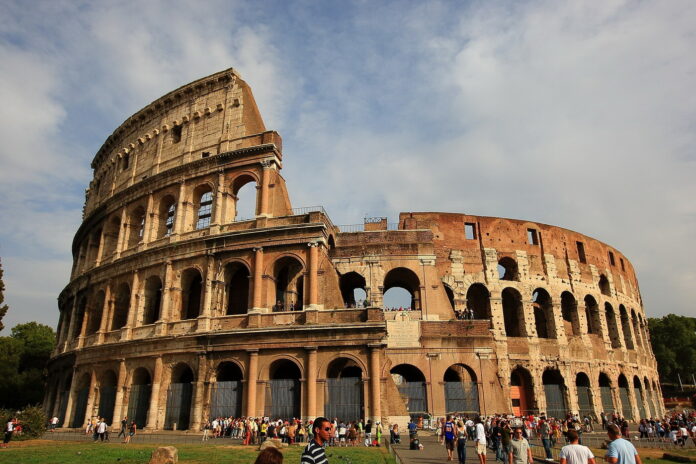The Colosseum in Rome, also known as the Flavian Amphitheatre, is an ancient arena that once hosted gladiator contests, animal hunts, and public spectacles. Built nearly 2,000 years ago, it remains one of the most iconic symbols of the Roman Empire and a popular tourist destination.
Its impressive architecture and historical significance make it a fascinating subject for visitors and historians alike.
Interesting Facts About the Colosseum
- The Colosseum was completed in 80 AD under Emperor Titus.
- It could hold up to 80,000 spectators.
- The arena is elliptical, measuring 189 meters long and 156 meters wide.
- The Colosseum was used for gladiatorial contests and public spectacles.
- It is made primarily of stone and concrete.
- The Colosseum has four stories, including the arena and underground levels.
- The arena floor was made of wood covered with sand to absorb blood.
- There were 80 entrances, allowing easy access for the massive crowds.
- The Colosseum had a complex system of elevators and pulleys to lift animals and gladiators to the arena floor.
- The underground structure, called the hypogeum, housed animals, slaves, and gladiators before contests.
- It was used for mock sea battles, with the arena sometimes flooded with water.
- The Colosseum had an awning called the velarium to protect spectators from the sun and rain.
- It was funded by the spoils taken from the Jewish Temple after the Siege of Jerusalem.
- The Colosseum was partially damaged by an earthquake in 1349.
- It is one of the New Seven Wonders of the World.
- The name “Colosseum” is believed to be derived from a colossal statue of Nero that once stood nearby.
- The Colosseum is a UNESCO World Heritage Site.
- It was used as a quarry for building materials in the Middle Ages.
- The Colosseum has inspired modern stadiums and arenas.
- It features in many films and books, symbolizing ancient Rome.
- Pope Benedict XIV declared it a sacred site in 1749 to honor early Christian martyrs.
- The Colosseum hosts an annual Good Friday “Way of the Cross” procession led by the Pope.
- Restoration projects have been ongoing since the 1990s to preserve the structure.
- The Colosseum is one of Italy’s most popular tourist attractions, drawing millions of visitors each year.
- It is illuminated at night to highlight its grandeur.
- The original seating arrangement was based on social hierarchy, with the best seats reserved for the elite.
- The Colosseum was also used for dramas and reenactments of famous battles.
- It has a museum dedicated to Eros on the upper floor.
- The Colosseum’s architecture has influenced many buildings throughout history.
- Despite its age and partial ruin, the Colosseum remains a powerful symbol of Rome’s enduring legacy.
